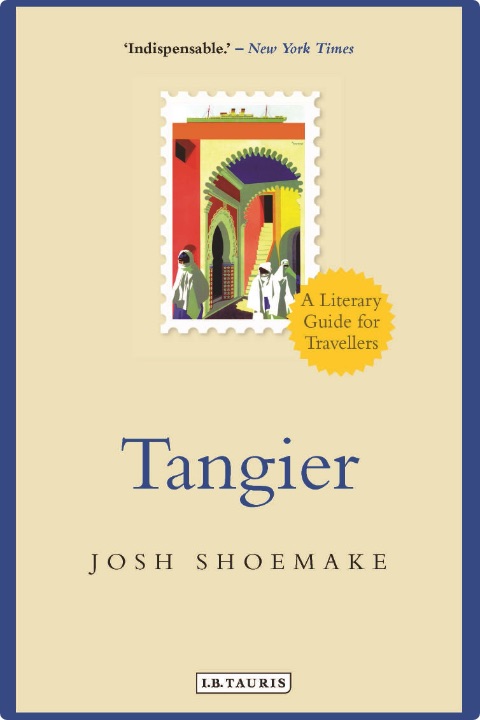This may sound a little orientalist, but Tangier has some claim to being the most foreign city in the world. Back in the day, its position at the northernmost tip of Africa was regarded as the edge of civilisation — more than that, as the edge of what was known, the edge of everything. Here were the Pillars of Hercules, which in addition to performing the important function of holding up the sky, were said to be engraved with the words ‘nec plus ultra’: beyond this, nothing.
Since its foundation in the 5th century BC, the city has been variously controlled by the Carthaginians, the Phoenicians, the Romans, the Arabs, the English (for a couple of decades in the 17th century) and the Spanish. Then, in 1923, it became the international zone, ruled by a French-Spanish-English- Italian-American-Belgian-Dutch-Portuguese-Moroccan council. By 1956, when the zone was finally disbanded, Tangier’s population was split 50-50 between foreigners (which is to say non-Moroccans) and locals. In other words, the city had become as foreign to the locals as to the foreigners.
They’re a strange bunch, writers, drawn to foreign climes, where it doesn’t feel so strange that they should feel so strange. Where better than Tangier? As Josh Shoemake points out in his engaging and occasionally enraging literary guide, this schizophrenic city has had many aliases, including also Tangiers, Tingis and Tanja (expats are known as Tangerines, locals Tanjaouis).
Many of the strangest Tangerines, and their inquisitive visitors, have been writers, attracted by the city’s otherness, the cheapness of living, and, in a striking number of cases, the fact that sleeping with small Arab boys wasn’t looked at askance. Tennessee Williams, Truman Capote, Joe Orton and, above all, William Burroughs and Paul Bowles, who lived there for decades, were all ‘edge’ writers, to use one of Shoemake’s favoured phrases, and his Tangier is an ‘edge’ city.
These are the men who have conspired to define the international image of the place, more than locals such as Mohamed Choukri and Larbi Layachi (who first published their books in translation, since Moroccan Arabic wasn’t a written language). They wrote about the city; they wrote about each other. As its subtitle suggests, this book, which takes the form of a discursive, often diverting stroll through the city’s labyrinthine streets, is as much about the writers who lived, wrote and looked for sex and love in them as it is about the streets themselves.
There’s a lovely description from Bowles of Capote, flushed with literary success, arriving in Tangier for an extended stay, only, from the deck of his steamer, to spot his arch enemy Gore Vidal unexpectedly waiting for him on the quayside:
His face fell like a soufflé placed in the ice compartment, and he disappeared entirely below the level of the railing for several seconds.
It sometimes seems as if Tangier is a place for writers to be mean about other writers. (Elsewhere, Bowles is amazed at the way Capote has all his literary projects mapped out in his head, ‘like baby crocodiles, waiting to be hatched’.) Yet to be honest, I could have done with a bit more cattiness. Shoe is as much in love with writers as with their books, and more than happy to applaud their articulate nonsensicalities.
In his chapter on the medina, he again quotes Bowles:
In Europe, it seems to me, the past is largely fictitious; to be aware of it one must have previous knowledge of it. In Tangier the past is a physical reality as perceptible as the sunlight.
Which is clearly cobblers.
The same literary-groupie impulse leads the author to refer to the wholly bad Paulo Coelho in a similarly reverent tone to that he employs for Bowles or Burroughs.
And nowhere is there much moral appraisal of the transgressive hedonism these self-congratulatory misfits tried on for size during their time in Morocco. Their motto, you might fancy, was nec plus ultra: they went so far that it must have felt as if there was nothing beyond.
But there is always something beyond, as the playwright Joe Orton discovered in 1967. This was the third consecutive year he and his boyfriend Kenneth Halliwell holidayed in Tangier, where, when they weren’t picking up teenage Arab boys, the former devoted his energies to being nasty to the latter (sneering, for example, that he wasn’t very adventurous with their pick-ups). Halliwell mostly absorbed this treatment, but on their return to London, he snapped, and beat Orton’s brains out with a hammer.
Shoemake concludes the tale:
Then he poured himself a glass of grapefruit juice and washed down 22 pills of Nembutal. Before he died he left a note on the desk: ‘If you read his diary all will be explained. K.H. P.S. Especially the last part.’

